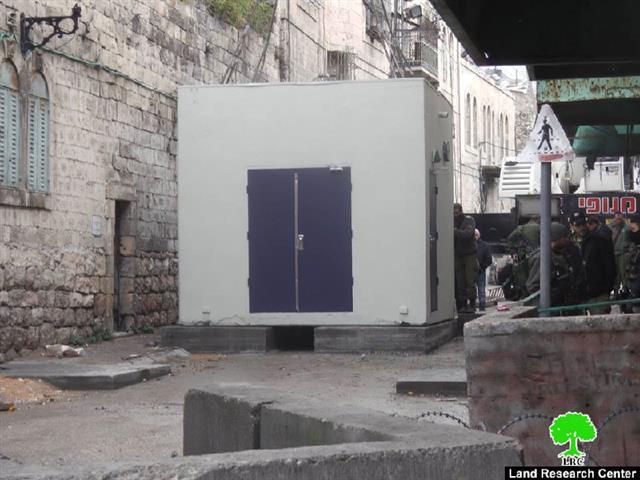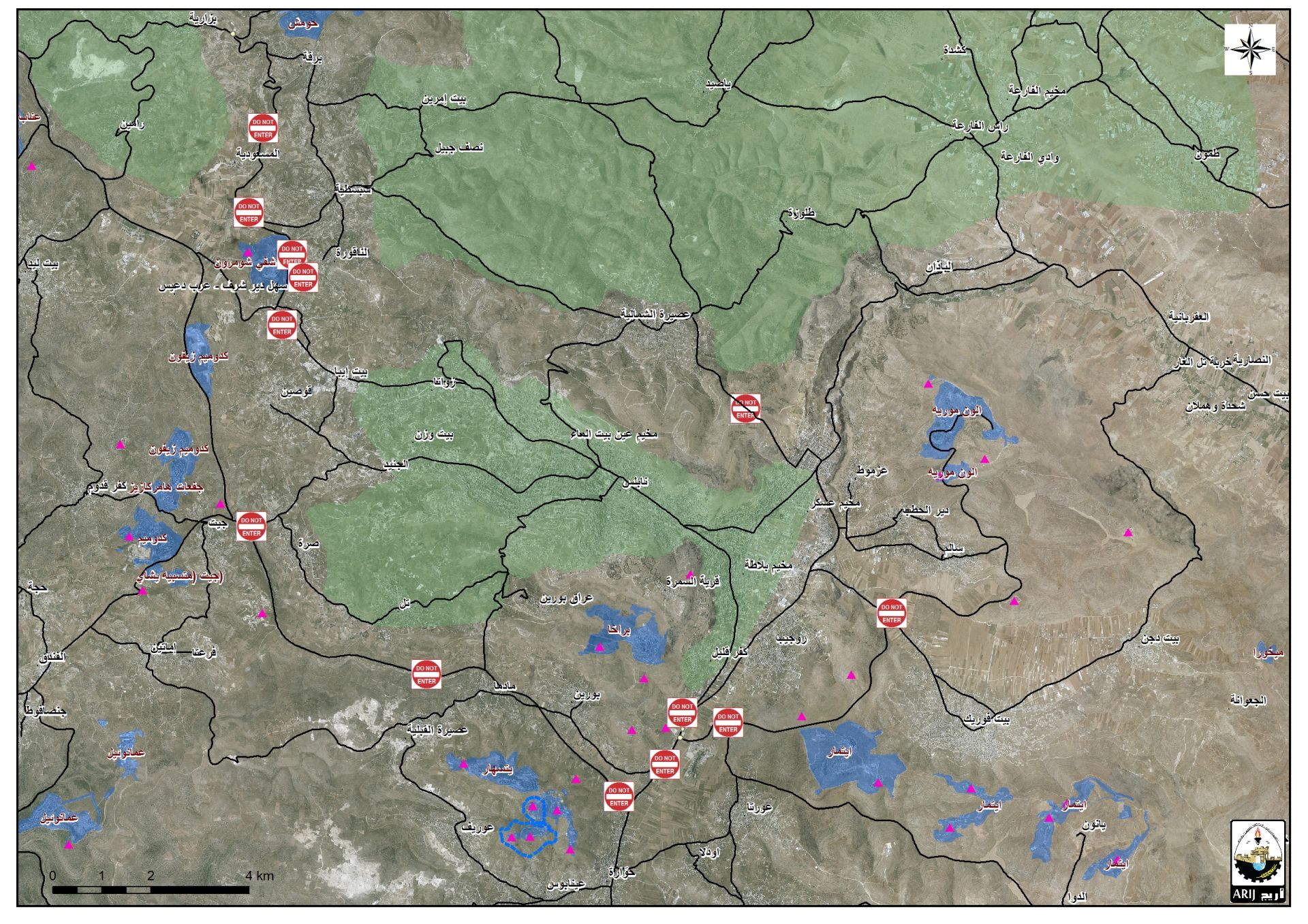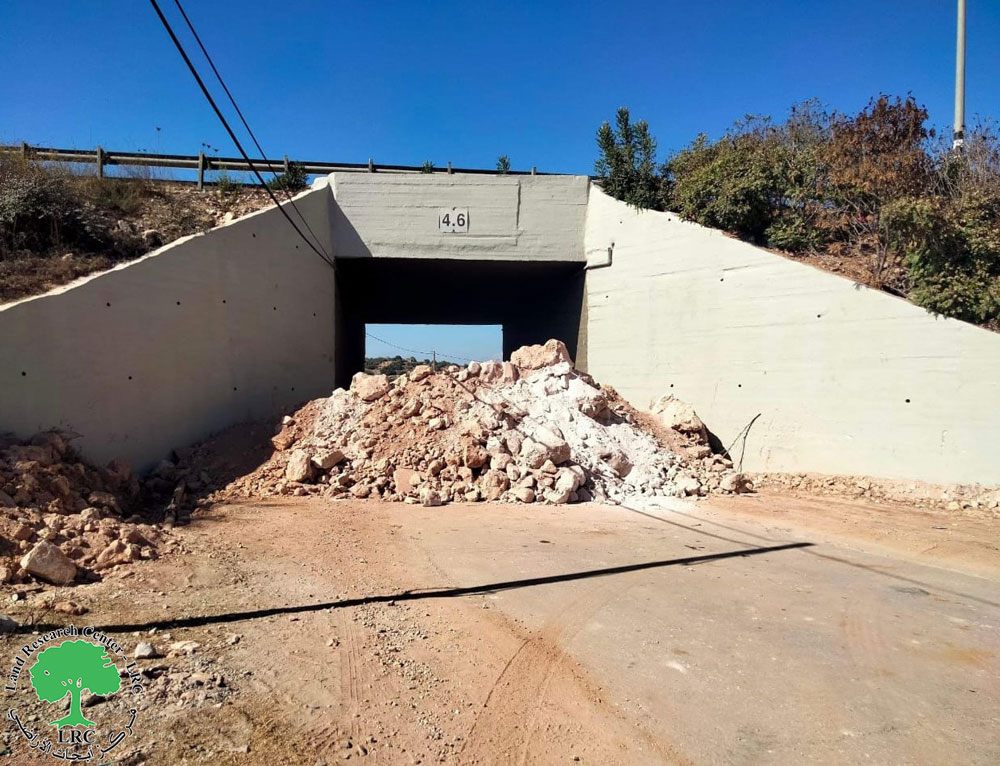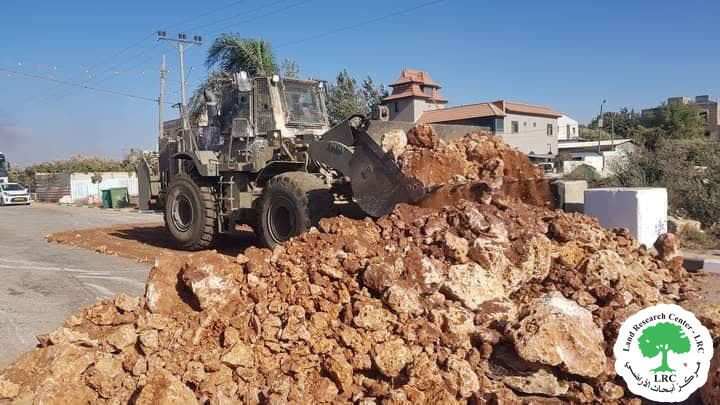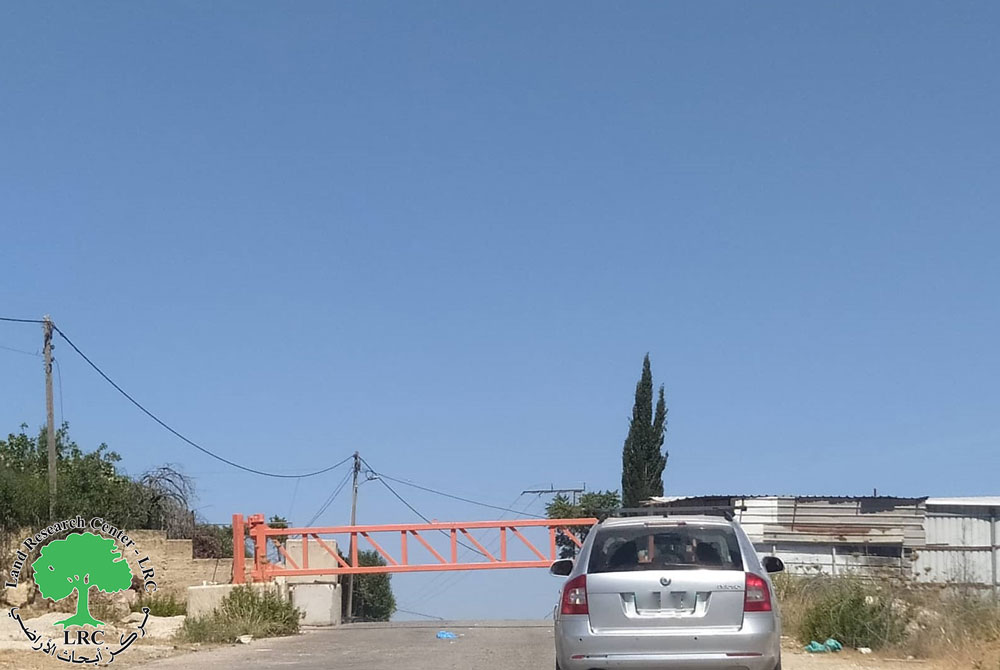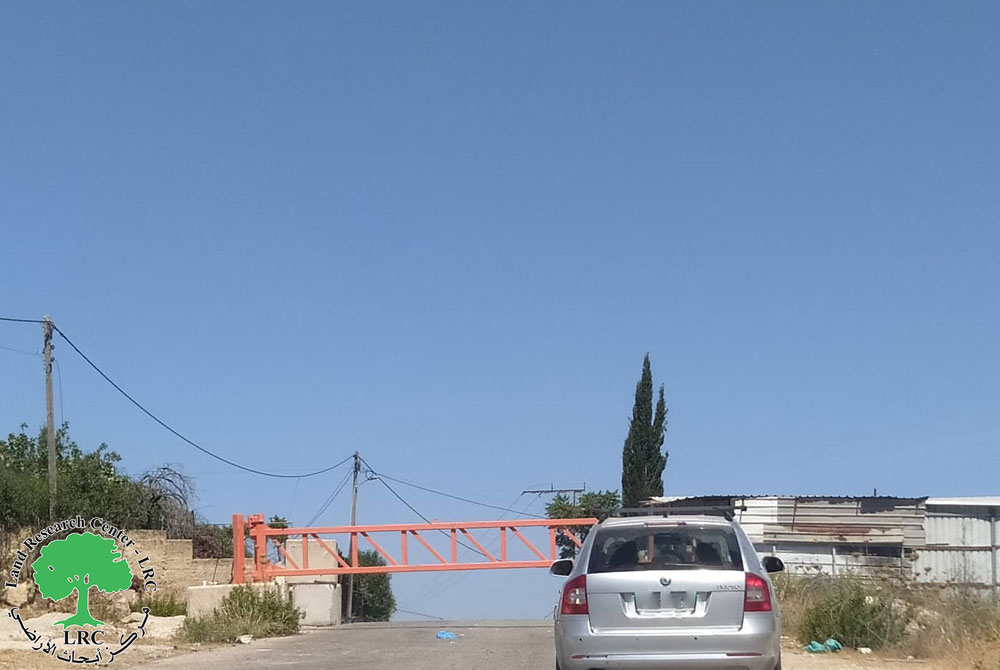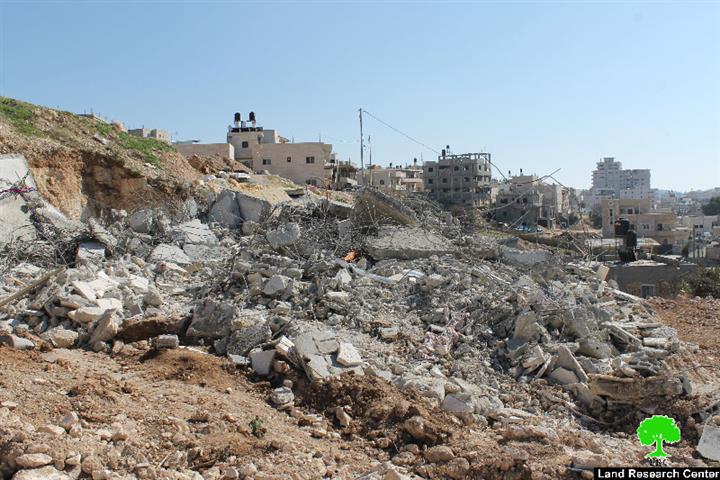- Violation: reinforcing closure on a street
- Date: starting from October 2015
- Perpetrators: Israeli Occupation Forces
- Victims: 70 Palestinian families
Details:
Israeli occupation authorities since September 20, 2015 until now escalated arbitrary measures on residents of Al-Shuhada Street area in the city center of Hebron. The checkpoint blocking the area was reconstructed and new complicated security procedures were applied.
It should be marked that Israeli Occupation Forces issued on December 2015 the military order number (15/16/T) stating a "land grab" on some areas at the entrance of Al-Shuhada street. Noteworthy, the order came in both languages Arabic and English and was supported with aerial photos and maps illustrating the takeover locations. Israel justified the takeover on the claim of "military and security purposes". The order was approved effective on its issuance date until December 31, 2018.
Photos 1-8: the military order number (15/16/T)
After the order was approved effective, the Israeli Occupation Forces forced closure on the area and declared it inaccessible. The so-known "Container checkpoint" at the entrance of Shuhada Street has new complicated security measures and procedures added. The area is reported to become as a "Border Crossing" for the intense security measures applied. Noteworthy, only few families live on the other side of checkpoint for others had to leave due to the constant harassment of military soldiers and colonists.
Photos 8-9: changes on the checkpoint before 2015
Counting and numbering residents of Al-Shuhada Street:
At time of expanding and imposing new measures on the checkpoint, the Israeli Occupation Forces, at night, counted and numbered the houses and residents of the area as the occupation does with prisoners. From that moment on, any person who was not counted and numbered is considered a stranger to the area and cannot access it. Any resident who doesn’t present hisher number at the checkpoint cannot pass through it. Others must be bodily searched.
Photos 10-12: works on the checkpoints at the entrance of Al-Shuhada Street
Next day, the Israeli Occupation Forces set up an electronic gate for pedestrians coming from Tal Rmeida area in addition to a checkpoint and a gate nearby Qurtuba school. The reason behind such measures is to double check the counting and the numbering of the area's residents. Noteworthy, residents used to reach their houses through the roofs and house of neighbors but the occupation stopped them the moment they found out about it.
Residents of Al-Shuhada Street refuse to be just "numbers":
After five days on the names filtering, lists of names and numbers of citizens were distributed at the checkpoint for soldiers to verify the identities of the area's residents. Stickers holding the numbers of residents were also glued at the back of residents' IDs to be presented for soldiers at time of entering and existing the area.
Residents rejected such measure and peacefully protested at the checkpoint demanding not be dealt with as numbers. A citizen from the area, Mufeed Al-Sharabati, who refused to be given a number is now not allowed to enter and exit the area through the checkpoint.
Sharabati told Land Research Center the following:
"The area is considered military closed zone since so long ago, commercial shops are banned to open since the massacre of the Abraham mosque. Suffering existed even before closing the area via a checkpoint, imagine how much people suffer now with the numbering thing"
It should be marked that such measures were used by Nazis against Jews during World War II.
The Israeli Occupation Forces also evicted international volunteers from the area, they expelled a team from the International Solidarity Movement , who live in a leased house in the area of Tal Rmeida. Hence, only 382 residents registered with numbers are allowed to pass through the checkpoint to reach the area of Tal Rmeida.
Nature of the new checkpoint:
Previously known as "Container checkpoint", the new checkpoint got to be called " Al-Shuhada Street crossing" due to the complicated entry and exit procedures taken at it.
Photo 13: a view of the new checkpoint
Forcible displacement through humiliation:
Citizen Imad Abu Shamsiya given the number 242 by the occupation from the area of Al-Shuhada Street told Land Research Center the following:
"I stand before a metal spinning door and I ring the bell waiting for the soldier on the other side to open the door since it is linked to a button pushed from the other side. Sometimes, soldiers ignore the bell and this depends on their mood. If opened, we proceed to a room where we leave our possessions before walking through a metal detecting machine. Next step is to present our IDs to the soldiers who are stationed in a fortified room behind their computers. We deliver them the IDs through a slot in the room's window. When they check our access numbers, they allow us to leave after getting our possessions from a drawer on the other side of the checkpoint"
Harassment policy:
Abu Shamsiya said that many damages and losses followed the residents of the area due to the closure. He also pointed out that colonists are free to move in the area and to attack locals' houses and properties.
Such arbitrary measure deprived residents of the area from communicating and socializing with their relatives outside the borders of Al-Shuhada Street, given that only people with numbers can go in and out of the area.
Danger is believed to follow vulnerable people of sickness and old age who will face difficulties in case of health emergency cases.
Extending the validity of the road closure :
The Israeli Occupation Forces on January 02, 2016 issued a military order to extend the validity of closure on Al-Shuhada Street and to ban non-residents from entering the area. Colonists on the other hand were given the ultimate freedom to move and transport in the area under intense protection of the Israeli occupation army.
It should be marked that with the extension time drawing to an end, the Israeli Occupation Forces intend to issue another order extending the validity more and more. This is to force the only 70 Palestinian families out of the area to create room for colonists to take it over. A number of outposts are founded in the area namely ( Beit Hadasa, Givat, Habout, Ramat Yashai, Abraham Avino).
Photos 14-15: the order of "validity extension"
Historical overview:
It should be mentioned the occupation closed the street in 1994 in the aftermath of the massacre of the Abraham mosque that was carried out by an extreme colonist. As a result, hundreds of shops and markets were totally shut down and cars movement was banned through the street, which doubled the distance people have to take every day to reach the city of Hebron.
It should be also marked that the Hebron Protocol signed within Oslo Accord in15/01/1997 and according to the article no.8 stated the following:
a. Both sides reiterate their commitment to maintain normal life throughout the City of Hebron and to prevent any provocation or friction that may affect the normal life in the city.
2. The movement of vehicles on the Shuhada Road will be gradually returned, within 4 months, to the same situation which existed prior to February 1994. On this very checkpoint, an elderly and four youth were killed. Names and information are illustrated in the table below:
|
# |
Name of martyr |
Date of martyrdom |
Location |
Remarks |
|
1 |
Hadeel Al-Hashlamoun (18 years) |
22/09/2015 |
The military checkpoint at the western entrance of Shuhada Street |
A resident of Tal Rmeida. She was shot from a three meter distance with ten bullets |
|
2 |
Tareq Al-Natshih (16) |
17/10/2015 |
Al-Shuhada Street |
Stabbing attack claim |
|
3 |
Fadil Qawasmih (18) |
17/10/2015 |
Al-Shuhada Street |
A colonist shot the boy in the head for no reason |
|
4 |
Hisham Al-Azih (54) |
21/10/2015 |
The military checkpoint at the western entrance of Shuhada Street |
Resident of the area. Died after inhaling toxic gas fired by the occupation forces |
|
5 |
Farouq Sidir (19) |
29/10/2015 |
Al-Shuhada Street |
Resident of Hebron |
Land Research Center sees the closure as a restriction to the right to movement and that it contradicts all international conventions of related such like :
The Universal Declaration of Human rights1948:
- Article 3: Everyone has the right to life, liberty and security of person.
- Article 9: No one shall be subjected to arbitrary arrest, detention or exile.
- Article 13:
- (1) Everyone has the right to freedom of movement and residence within the borders of each state.
- (2) Everyone has the right to leave any country, including his own, and to return to his country
The International Covenant on Civil and Political Rights:
- Article 7 prohibits torture and cruel, inhuman or degrading punishment.
- Article 9 recognizes the rights to liberty and security of the person. It prohibits arbitrary arrest and detention, requires any deprivation of liberty to be according to law, and obliges parties to allow those deprived of their liberty to challenge their imprisonment through the courts
Prepared by
The Land Research Center
LRC

